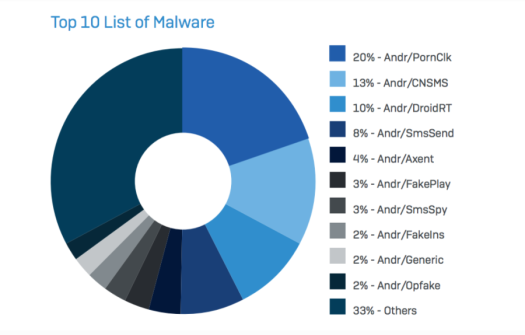Skilled ‘Bluenoroff’ arm of infamous Lazarus hacking team behind Bangladesh Bank heist and Sony attacks actively resists investigators on its trail, Kaspersky Lab says.
KASPERSKY SECURITY ANALYST SUMMIT 2017 – St. Martin – Even after global financial messaging service provider SWIFT began the process of hardening its systems to prevent another Bangladesh Bank-type heist, the Lazarus hacking group behind the original attack managed to get past the new security barriers in other attack attempts against other banks.
“SWIFT added a layer of integrity-checking, and they [the attackers] tampered with it,” says Costin Raiu, head of the global research and analysis team at Kaspersky Lab. After SWIFT further locked down the transaction process, Lazarus came back again and tampered with memory protections, he says.
Lazarus is the aggressive hacking group believed to have engineered the 2014 epic destructive Sony Pictures Entertainment attacks, and identified by the FBI as a North Korean nation-state group. These days it has much larger aspirations as demonstrated by its $81 million cyber heist of Bangladesh Bank. According to new research revealed here this week by Kaspersky Lab, the bank heist, as well as a wave of other attack attempts on banks worldwide, is the handiwork of an arm of Lazarus with special skills and the main goal of stealing money.
Kaspersky Lab calls this subgroup Bluenoroff, a unit that works as part of the larger Lazarus organization and continues to target banks as well as casinos and even Bitcoin operators. This A-team has experienced reverse-engineering and forensics expertise, according to the researchers.
“What is scary is they move so quickly,” Raiu says. “The moment they understand you are hunting for their tools they started password-protecting all tools and locking them down with strong encryption. You cannot analyze a tool unless you know the password.”
Raiu says there must be thousands of hackers in Lazarus. “They have an incredible stream and flood of tools. Other APT groups use the same tools for years. These guys have a new tool for every target,” he says. “They are constantly improving an getting better at going after more and more targets.”
Matching Wits
Kaspersky’s investigators have matched wits with Bluenoroff. “They know how we go after them and they actively resist,” says Vitaly Kamluk, principal security researcher at Kaspersky Lab. For example, Bluenoroff masks its malicious dropper code inside an encrypted container so investigators can’t see it, but Kamluk says his team ultimately was able to get access to secret passwords.
That type of security by the group is a far cry from earlier attacks from purported North Korean nation-state attackers, who were best known for more rudimentary backdoors and processes, notes Kamluk, who stopped short of confirming that North Korea is the attacker here. “It’s definitely related to North Korea, but we can’t say with true confidence that it is.”
Kaspersky Lab several months ago found “patient zero” at Bangladesh Bank and traced the infection to a government regulatory website that dropped malware onto the victim’s machine. By keeping mum on that finding over the past few months, the researchers were able to gather their newest intel on Bluenoroff after the group made a rare slip-up and left behind traces of their activity on a victim server.
That led researchers to find communications from an IP address in North Korea after the attackers made a rare slip-up. BAE Systems in its investigation of Lazarus also has seen the same IP address out of North Korea.
Kaspersky Lab, meanwhile, found the malware from the group as far back as December 2015 on machines in financial institutions, casinos, and financial-investment software developers, in Korea, Bangladesh, India, Vietnam, Indonesia, Costa Rica, Malaysia, Poland, Iraq, Ethiopia, Kenya, Nigeria, Uruguay, Gabon, Thailand, and other countries.
The Kaspersky researchers were able to detect and stop Bluenoroff attacks on a bank in Vietnam as well as one in Europe, as the group was actively targeting financial institutions in the wake of the Bangladesh Bank incident.
Dries Watteyne, head of customer security intelligence at SWIFT, said in a presentation here this week that the Bangladesh Bank attack was a “watershed event” for SWIFT. “They had sophisticated knowledge of the bank application” and bypassed transaction-verification checks and deleted their fraudulent payment instructions and modified SWIFT messages, he said.
SWIFT has since implemented a new customer security program aimed at stronger fraud detection and more secure transaction processes. “We’re hardening our software and using big data in our central database to detect earlier [any] potential fraud, he said. SWIFT will release its new updated security controls this month for member banks, he said.
How Bluenoroff Hacks
Meanwhile, according to Kaspersky’s new research, Bluenoroff’s MO works like this: the attackers breach a system inside the bank via a watering hole attack using an exploit on a legitimate financial industry website, or remotely exploit a system with malware. The attackers then hop to other bank computers and install backdoors that allow them to move about freely and conduct reconnaissance on the bank, studying its network and systems architecture and locating key targets such as authentication information and domain controllers.
Once they have the lay of the land, they drop custom malware that can sneak past security software or measures in financial applications. That’s when they start processing rogue transactions and stealing money.
Bluenoroff appears to have gone dormant for now, which Kaspersky believes is a sign that they are regrouping and creating new attack tools.

Check out the two-day Dark Reading Cybersecurity Crash Course at Interop ITX, May 15 16, where Dark Reading editors and some of the industry’s top cybersecurity experts will share the latest data security trends and best practices
Related Content:
Kelly Jackson Higgins is Executive Editor at DarkReading.com. She is an award-winning veteran technology and business journalist with more than two decades of experience in reporting and editing for various publications, including Network Computing, Secure Enterprise … View Full Bio
Article source: http://www.darkreading.com/attacks-breaches/matching-wits-with-a-north-korea-linked-hacking-group-/d/d-id/1328572?_mc=RSS_DR_EDT


